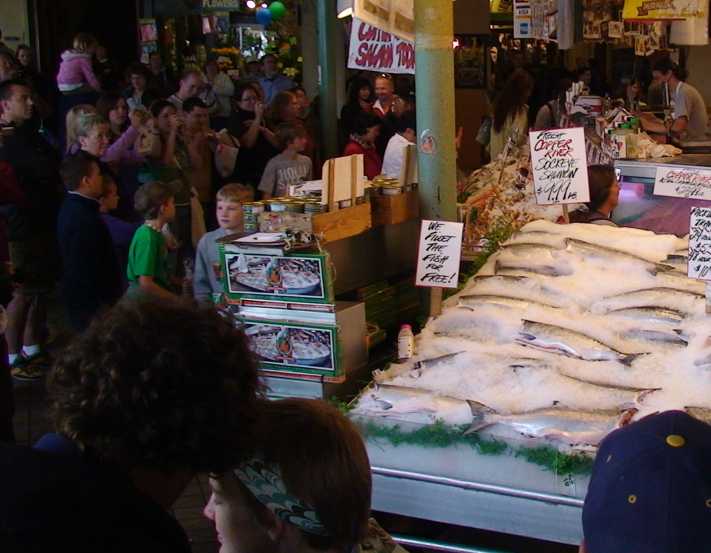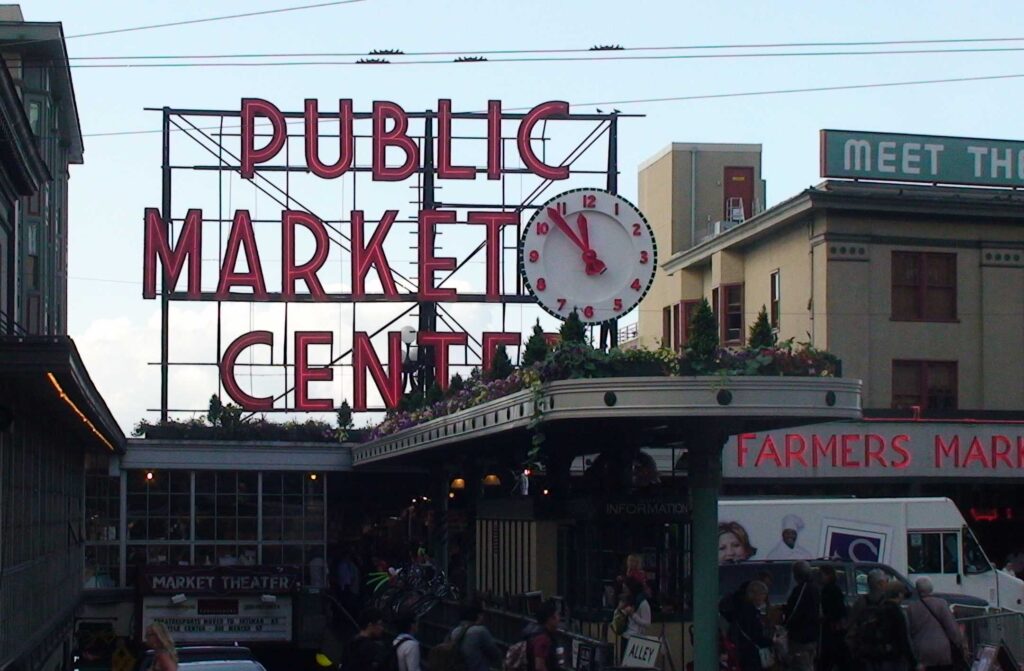Every few years, my wife and I take a nostalgic trip back to Seattle—the city where we got married. One of our favorite places to revisit is the iconic Pike Place Market. This historic spot never disappoints, bursting with vibrant colors, smells, sounds, and that lively chaos that makes it so memorable. But on our most recent visit, amid the bustling crowds and flying fish, I was reminded of a powerful business lesson: the undeniable importance of location.
We parked along Alaska Way and took the elevator up to the top level of the market. Immediately, the smell of fresh seafood and the shouts of fishmongers filled the air. You can’t miss the men in rubber boots and bright orange suspenders tossing large fish like footballs while calling out names like “King for Josh!” Tourists love it. Cameras are everywhere. People cheer. It’s a performance that’s become a staple of Seattle’s charm.
But behind the spectacle lies a subtle lesson in how human behavior and traffic patterns can shape the success—or struggle—of brick-and-mortar businesses.
The Geography of Attention

The top level of Pike Place Market is the heartbeat of the entire area. Packed shoulder-to-shoulder with visitors, it houses vendors selling everything from artisan cheeses and organic vegetables to fresh-cut flowers and hand-crafted goods. But the layout has a quirky feature. The market’s main aisle is a one-way flow with no easy outlet, so once shoppers reach the end, they’re forced to turn around and retrace their steps—doubling the exposure for businesses located along that route.
Now here’s where it gets interesting: directly across the cobblestone street—literally just a few feet away—are several charming specialty shops. You’d think they’d see similar foot traffic. After all, it’s the same tourist hub. Same parking access. Same scenic views. But they’re almost empty.
Why? Because most people, rather than crossing the street, simply turn around and walk back down the same aisle they came from. That slight deviation in path—just a few steps—makes all the difference.
This phenomenon isn’t unique to Seattle. I witnessed a similar dynamic during a trip to the Sturgis Motorcycle Rally. Vendors stretched along 14 blocks of the main streets sold everything from T-shirts to custom motorcycle seats. It’s a classic red ocean: highly competitive, with most vendors selling nearly identical products with minimal pricing differences. Given the short window of opportunity—no one wants a 2016 souvenir shirt after the rally ends—location becomes everything.
Some vendors, hoping to save a few bucks on rent, set up shop just off the main drag. On paper, the lower rent may seem like a smart business move. In reality, it eliminated their one major competitive advantage: foot traffic. By placing themselves outside the primary flow of rally-goers, they essentially made themselves invisible. Combine that with hiring disinterested temp workers, and their cost-saving tactics quickly turned into revenue-killing mistakes.
Whether you’re selling salmon at Pike Place or T-shirts in Sturgis, the lesson is the same: being close to the action isn’t enough—you have to be directly in its path.
What This Means for Your Business
This microcosm of human behavior is something every entrepreneur should study. Many people assume that if a location is near a popular area or shares the same zip code, it will enjoy the same level of business. But the reality is, just like those east-side shops at Pike Place or off the main drag popup shops at Sturgis, location success is about being in the flow—not just being nearby.
In retail, restaurants, salons, or any physical business, you need to be where people are already going—not just where you wish they’d go. A business located on the “wrong side” of a shopping center or even slightly removed from the main footpath can struggle, even if it’s offering the best product in the neighborhood.
Observing Traffic Patterns
Choosing a location without studying how people move is like throwing darts blindfolded. Before you sign a lease or open a storefront, do some detective work:
- Visit at different times of the day and different days of the week.
- Watch where people walk, gather, and stop.
- Are they just passing through, or are they lingering?
- Where do they enter and exit?
- Which entrances get the most use?
- Are there natural obstacles (like a busy road) that deter crossing?
Tools like SimplyAnalytics or SizeUp can help with demographic data, but nothing beats good old-fashioned people-watching.
A Real Estate Agent’s Rule of Thumb
Some commercial real estate agents use a simple coffee cup test. Stand outside the location at peak times with a coffee in hand and count how many people walk past in 15 minutes. Do it multiple times throughout the week. If it’s fewer than 20, that’s a red flag unless you’re a destination business. If it’s more than 50, you’re in promising territory.
The False Promise of “Address”
Back in Seattle, I was struck by how two businesses could be separated by nothing more than the evenness or oddness of their address—and yet experience vastly different levels of traffic. This reminded me: we can’t base location decisions solely on zip codes, rent rates, or perceived prestige. You’ve got to get boots on the ground and observe real behavior.
Your Business Needs Eyeballs and Footsteps
In the end, a great business in the wrong location is like a brilliant street performer hidden in an alley—no matter how good they are, they won’t get the crowd they deserve. Success in the retail industry is often as much about placement as it is about the product.
So next time you consider a physical location, ask yourself: Am I in the flow or just near it?
Have you ever studied how people move through your neighborhood or shopping area before choosing a business location?












